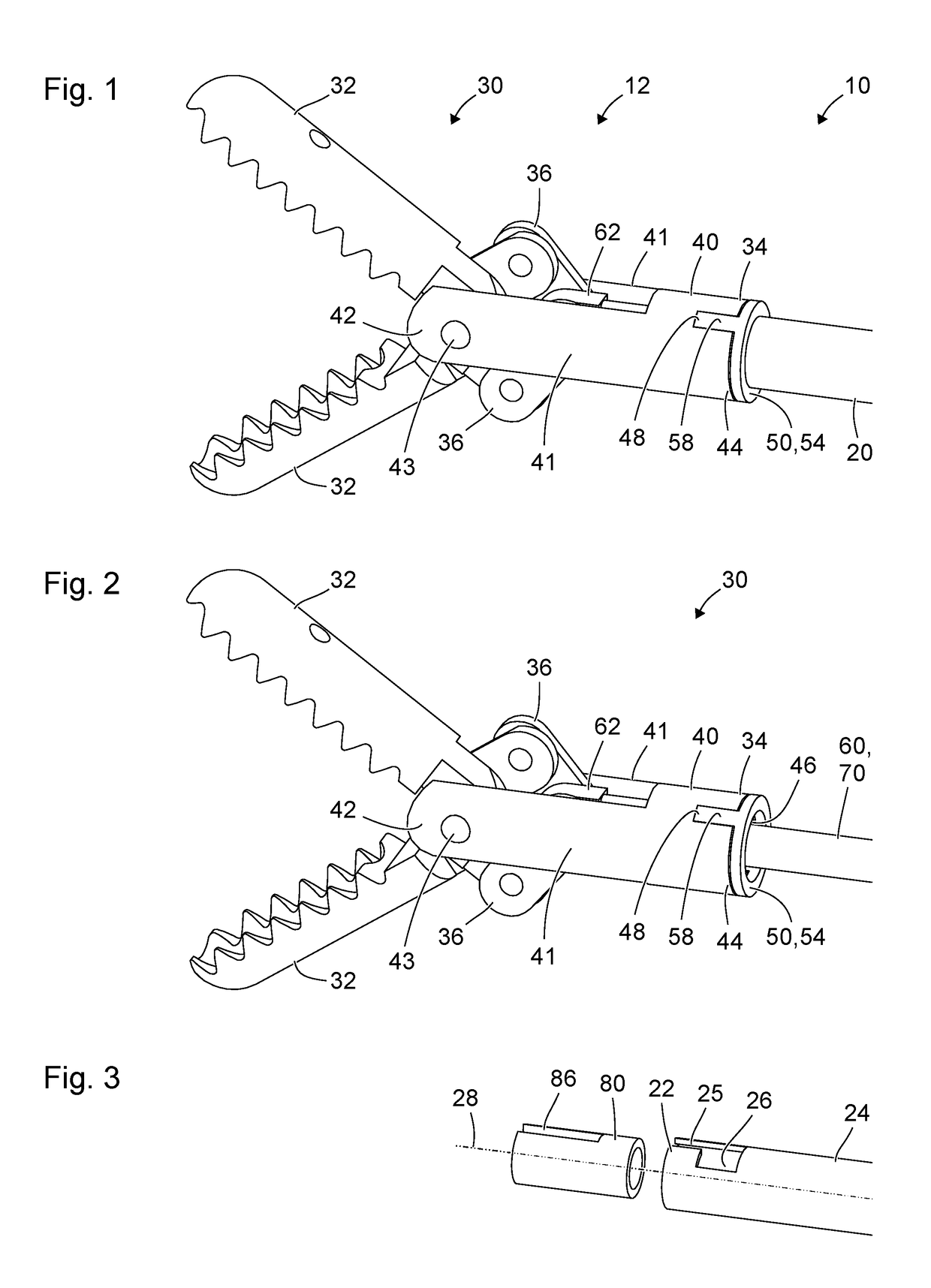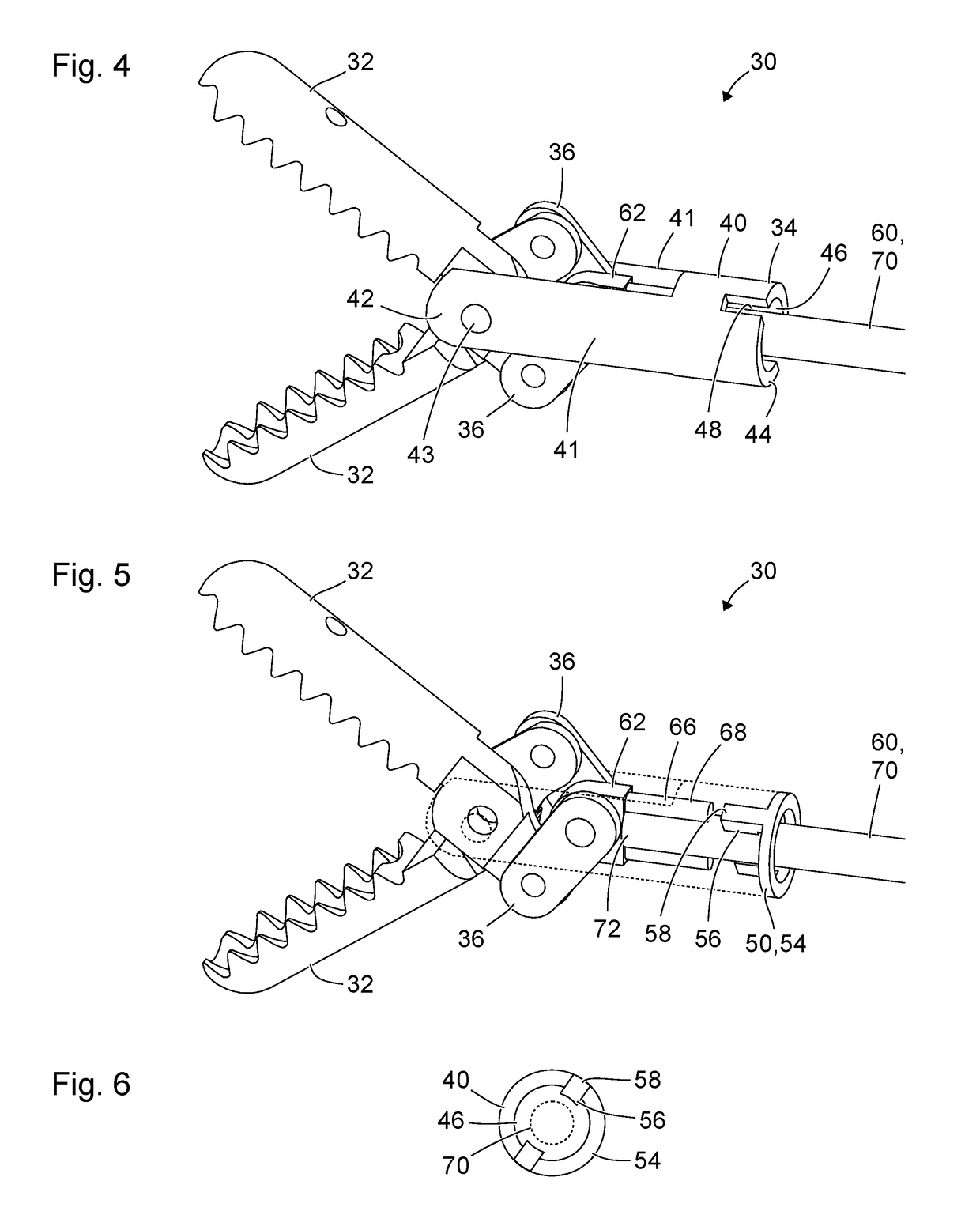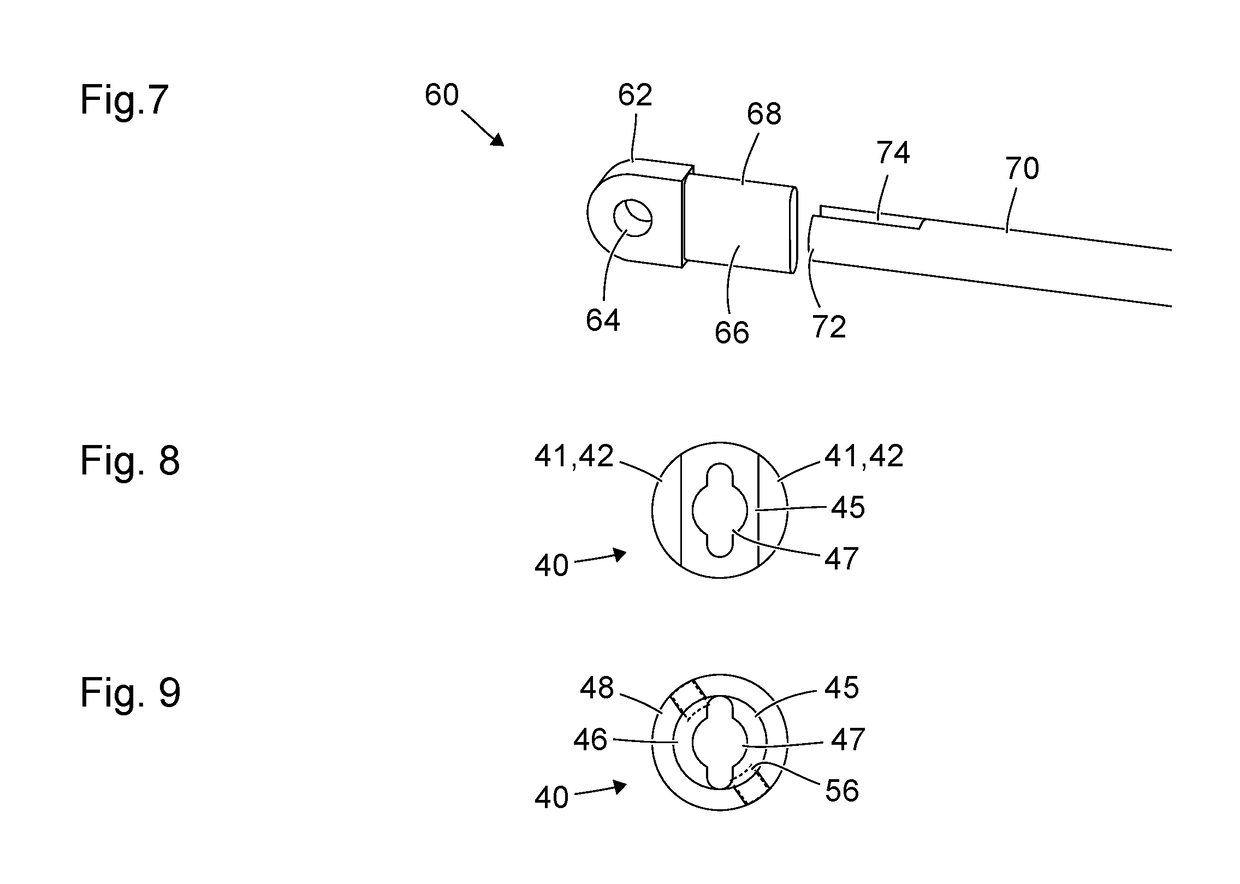Tool for a dismantlable medical instrument
a medical instrument and tool technology, applied in the field of tools for dismantling medical instruments, to achieve the effect of deep engagement and good form-fit engagemen
- Summary
- Abstract
- Description
- Claims
- Application Information
AI Technical Summary
Benefits of technology
Problems solved by technology
Method used
Image
Examples
Embodiment Construction
[0054]FIG. 1 shows a schematic axonometric view of a distal end 12 of a medical instrument 10 for micro-invasive applications in human or veterinary medicine. The medical instrument 10 has a long, thin, rigid or flexible (i.e. elastically deformable, or plastically deformable without destruction), straight or curved shank 20. The distal of the shank 20 is mechanically connected to a tool 30, in particular to the proximal end 34 thereof, in such a way as to be releasable without destruction. A manipulation mechanism for manually manipulating the medical instrument 10 can be provided at the proximal end of the shank 20.
[0055]The tool 30 comprises two branches 32 which are pivotable in opposite directions about the same pivot axis and which serve for the gripping, pinching, electrosurgical coagulation or cutting of tissue. The tool 30 comprises a first component or fork component 40 and a second component or catch component 50. The fork component 40 comprises two parallel side rails 41...
PUM
 Login to View More
Login to View More Abstract
Description
Claims
Application Information
 Login to View More
Login to View More - R&D
- Intellectual Property
- Life Sciences
- Materials
- Tech Scout
- Unparalleled Data Quality
- Higher Quality Content
- 60% Fewer Hallucinations
Browse by: Latest US Patents, China's latest patents, Technical Efficacy Thesaurus, Application Domain, Technology Topic, Popular Technical Reports.
© 2025 PatSnap. All rights reserved.Legal|Privacy policy|Modern Slavery Act Transparency Statement|Sitemap|About US| Contact US: help@patsnap.com



